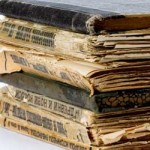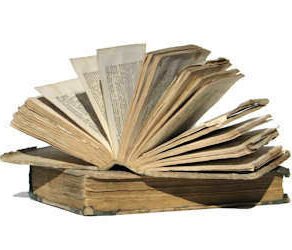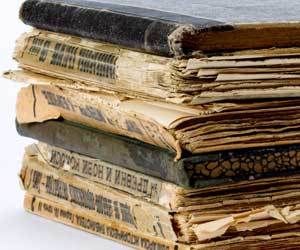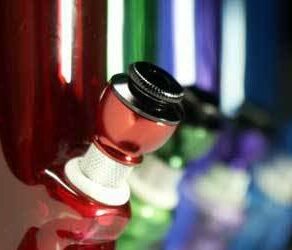Table of Contents:
You should give the books in your library a good cleaning at least once a year. Keeping your books clean can significantly extend their lifespan. The fastest way to keep dust from reaching the pages of your favorite books is by storing them with their spines facing out.
should give the books in your library a good cleaning at least once a year. Keeping your books clean can significantly extend their lifespan. The fastest way to keep dust from reaching the pages of your favorite books is by storing them with their spines facing out.
What You’ll Need
- Soft cloth or magnetic dusting cloth
- Absorene (optional)
- White vinyl eraser (optional)
- Vacuum with dusting brush attachment
- Cheesecloth (optional)
- Baking soda
- Paper bag
The Cleaning Process
- Clean the cover of your book.Wipe a paper or matte-finished cover with a soft cloth or a dry cleaning pad (available at art supply stores). If your book is leather-bound, rub petroleum jelly over the cover with the soft cloth and then buff it to achieve a “like-new” shine. On a glossy cover, you can use a glass cleaner, but make sure to spray the cleaner on a cloth first—not directly onto the cover! For a cloth binding, use Absorene (a Play-Doh-like substance found in art supply stores). Roll it over a surface to pick up dust or rub it like an eraser. You can also use a vulcanized rubber sponge.
- To remove price stickers, place a small amount of adhesive remover (such as Goo Gone) on the area with a Q-tip and then use a putty knife or very thin butter knife to peel it off. Careful not to use a knife that is too sharp—you don’t want to tear the cover. WARNING: This should not be done to rare or valuable books.
- Clean the inside of your book. To clean page edges of an old book, wipe them with a slice of fresh white bread or with a natural bristle brush. You can also use a magnetic dusting cloth (which works well for your shelves, as well!) Make sure never to use chemically-treated dusting cloths, since this can cause damage. According to Cleaning Plain and Simple by Donna Smallin, you may also vacuum your book’s edges with the dusting brush attachment. Remove the book’s dust jacket before vacuuming and always turn your book upside down so dust doesn’t make its way into the pages. If you are vacuuming a particularly old or fragile book, consider placing a piece of cheesecloth between the vacuum hose and attachment to reduce suction. If you use a regular duster, hold the book tightly shut while dusting the edges of the pages.
- If pages in your book have marks or stains, you can use a white vinyl eraser to remove them. Always move towards the outside edge of the page to avoid ripping.
- To remove oil and grease stains, place a paper towel between the offending pages, close the book, and put a weight on top (perhaps another book!) Leave it this way for several days to allow the towels to absorb the stain.
- If the edges of the pages are stained from finger oils, stand the book up on its spine using book ends as supports so the page ends are facing upwards, sprinkle a generous layer of baking soda over the edge, and leave it overnight or for 24 hours if possible before brushing off the powder into a dustpan. If any stains remain, the process can be repeated as many times as possible.
- WARNING: Do not try to remove any liquid stains that have already been absorbed and dried into the page, such as ink or colored water.
- Deodorize musty books. Keeping books in humid conditions can cause mold and mildew to grow and multiply, resulting in a musty odor. The first plan of action should be to place these books in a dry environment, but beware—musty books can pass their mold onto clean books, so this should be a preventative action. In their book, Haley’s Cleaning Tips, Rosemary and Graham Haley recommend placing the book in paper bag with some loose baking soda. Let the book sit in the bag for approximately 10 days before shaking the baking soda off. You can also try unscented kitty litter or cedar chips.
- If you are pressed for time, you can also try propping the book up in front of a small fan with its pages fanned out, then spraying Lysol from behind the fan. This should not be done on rare or valuable books.
- If you notice mildew on pages of your book, sprinkle some cornstarch on the affected areas and let sit for 24 hours before dusting off.
- To dry a damp book, buy calcium chloride from a hardware store (often used for slippery sidewalks instead of salt). Bake 1-c. in a 250°F oven for 1 hour. Put the calcium chloride in a sealed container with, but not touching, the book and leave like this for 2-3 days. Once it is dry, roll with Absorene.







When I moved, my books went into storage and the mice attacked them (I was so mad; there are words going through my head even now that would make a sailor blush!). My question is the same as above. How do you sanitize a book? How can I save my books! They’re not overly valuable as far as money goes, but I love them and some can’t be replaced. Please Help!
Thanks (also).
You can sometimes sand off the offending marks from the book edges. You can also tap the spot with a little diluted chlorine bleach or hydrogen peroxide on a Q-Tip. This will sometimes make a white spot, but it’s better than a black or brown spot.
I hate to say, in my view, some of these are nothing more than crackpot remedies that could very well ruin a good book. I recommend extreme caution. I would not use any of these tips without consulting a professional.
I agree, as a book collector and conservator do not do anything listed in this post.
I know this is a very old post, but maybe you are out there. What would you suggest if ALL of these are bad ideas. I have books from when I was little that are perfect for my little girls, but they are so dusty from 25 years of being on the shelf that I don’t dare give the books to them. I can’t afford to send 50 pounds of small to tiny books to a professional preserver. Thanks for any advice you can give.
Thank you for these tips! I got three new books in the mail and one of them had a sticker on the inside cover of the book. The book is paperback so the part where the sticker was is white and the rest is all old looking! How can I change the inside cover of the book to look as clean as the sticker area?
Mckenzie,
Try the white vinyl eraser or an art-gum eraser.
Another option is to bleach the page. Make a solution of 1:1 hydrogen peroxide and water, and add several drops of ammonia to the solution. Use a paintbrush or lint-free cloth to brush the solution over the page, avoiding the sticker spot. Wipe away any excess liquid and allow the page to dry.
Source: eHow – How to Bleach Paper White
I have books going back to the 1820s, and I’m worried about spores. Is there a way I can safely clean my books so I do not have to worry about catching any illnesses from my collection??
Having about 400 books, many 20-40 yrs old, not in bad condition, it is amazing the best American solution to a dusty book is to stick it in a bag of baking soda for ten days. At that rate, at ten bags at a time, I may finish in 400 days. Not how the west was won.
I left a hard cover library book out in the rain…is there anything I can do to restore it myself? It got wet but not soaked.
Thanks
Heryl,
This is the article that you need: How to Clean and Sanitize Wet Books. Good luck!
My family had a large bible with a once-white book cover… Hard back. It was not taken care of and now is mostly a beige color. Any way to clean it? It’s not valuable, but is sentimental.
Elaine,
As the bible is an heirloom, the yellowing is likely caused by oxidation. You can try using a Document Cleaning Pad or paper dry cleaning pad (available at art stores or the wallpaper section of hardware stores), however oxidation is usually not reversible. Instead, consider having the book recovered or putting a cloth book jacket over the cover. You could have someone in your family make the cloth jacket for extra sentimentality for future generations, or have a pre-made one specially embroidered with your family name.
Source: HowToCleanStuff.net – How to Remove Stains from Fabric Book Covers
Source: HowToCleanStuff.net – How to Remove an Oil Stain from Paper
Source: Today I Found Out – Why Old Newspaper and Book Pages Turn Yellow
I need a very small nozzle-type of vacuum that will safely clean loose mold from between the pages of very old books.
Janice,
Any vacuum can work for mold as long as it has a HEPA filter. Look for a mini or handheld one used for a car, desk, or other small purpose. Here is one on Amazon that might work. If it has a mini hose attachment, that’s the nozzle style it sounds like you’re looking for. If the suction is too strong, cover the nozzle with a piece of breathable fabric like cheesecloth or a thin sock and use a rubberband to hood the fabric in place. Good luck!
I have a couple soft and hard cover books with matte finishes. Unfortunately, when the covers come into contact with any sort of oils, even skin oils, it leaves a shiny residue and seemingly ruins the matte finish. Is there any way to fix this?
Jordyn,
Try the baking soda trick: cover the stain with a generous amount of baking soda (a thick pile, not a light dusting) and let it sit for a few hours or overnight. The powder should absorb the oil. Repeat as many times as needed. In the future, be sure to always wash your hands before touching the matte books. Good luck!
There is no mention as to how adhesive residue from library stickers can be removed from cloth hardbound books. A used, out-of-print book I purchased for a granddaughter’s birthday gift has large patches of adhesive residue on the front mainly, but also bit on the spine and back from more than just the stickers I’ve removed. Googling found nothing helpful as everything is for dry stains. I don’t want to try “Goof Off” unless it will truly work, since I’m sure it will leave an odor and possibly a permanent stain. Is there anything else that will work effectively and safely?
Karen,
Try using the method from the guide How to Remove Sticker Residue from Microfiber Upholstery (isopropyl alcohol). Another option is to try using a piece of duct tape or another strong tape; gently blot the residue with the badk of the tape and the adhesive on the tape can grab the old residue. Heat works well for loosening residue as well, so warming up the adhesive with a hair dryer before any removal method could help. If you decide to try an oil, here’s a guide for removing the oil stain: How to Remove Cooking Oil from Upholstery.